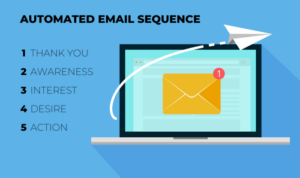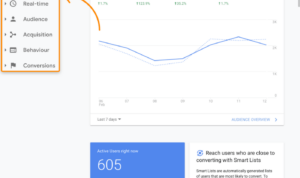Creating Interactive Content is the key to unlocking audience engagement and enhancing user experience. From quizzes to polls, explore the dynamic world of interactive content that keeps users coming back for more.
Importance of Interactive Content
Interactive content is like the secret sauce that keeps audiences coming back for more. It’s all about engaging peeps, getting them involved, and making them feel like they’re part of the action. This ain’t your grandma’s boring old content – this is the stuff that makes you wanna click, tap, and swipe like there’s no tomorrow.
Examples of Successful Interactive Content Campaigns
Let me drop some knowledge on ya with examples of interactive content campaigns that straight-up slayed the game:
- The New York Times’ “Snow Fall” interactive article that had readers scrolling through a multimedia experience of a deadly avalanche. Talk about gripping storytelling!
- BuzzFeed’s quizzes that let users find out which ’90s sitcom character they are or what type of pizza they should eat based on their favorite emoji. It’s like a digital personality test that’s actually fun!
- Nike’s interactive shoe customization tool that lets sneakerheads design their own kicks from the ground up. It’s like playing dress-up for your feet!
Enhancing User Experience on Websites
When it comes to websites, interactive content is the key to unlocking a whole new level of user experience. It’s like giving your visitors a VIP pass to the coolest party in town. Here’s how interactive content can take your website from meh to yeah:
- Increased engagement: Interactive elements like quizzes, polls, and calculators keep visitors on your site longer and coming back for more.
- Personalization: Customizable features let users tailor their experience to their preferences, making them feel special and valued.
- Data collection: Interactive content can provide valuable insights into user behavior and preferences, helping you tailor your content and offerings to better meet their needs.
Types of Interactive Content: Creating Interactive Content

Interactive content comes in various forms, each serving a unique purpose in engaging and interacting with audiences. Let’s explore some of the most common types of interactive content and discuss their effectiveness in different industries.
Quizzes
Quizzes are a popular form of interactive content that allows users to test their knowledge on a particular topic. They are engaging, educational, and can provide valuable insights into user preferences and behavior.
Polls
Polls are another effective way to engage audiences by soliciting their opinions on specific topics. They can be used to gather feedback, conduct market research, or simply spark conversations among users.
Calculators
Calculators are interactive tools that enable users to perform calculations based on certain inputs. They are particularly useful in industries such as finance, real estate, and e-commerce, where users may need to make quick calculations or decisions.
Interactive Infographics
Interactive infographics combine visual elements with interactive features to present complex information in a digestible format. They are great for storytelling, data visualization, and enhancing user engagement.
Interactive Videos
Interactive videos allow users to interact with the content by making choices that affect the outcome of the video. They are immersive, engaging, and can be used for educational purposes or interactive storytelling.
Augmented Reality (AR) Experiences
AR experiences blend the physical and digital worlds, providing users with interactive, real-time experiences. They are commonly used in industries such as retail, gaming, and education to enhance user engagement and provide unique experiences.
Each type of interactive content offers its own set of benefits and effectiveness depending on the industry and the specific goals of the content strategy. It’s essential to choose the right type of interactive content that aligns with your objectives and resonates with your target audience.
Designing Interactive Content

Interactive content design plays a crucial role in engaging users and creating a memorable experience. By focusing on key design principles, optimizing for mobile devices, and ensuring user-friendly interfaces, you can enhance the effectiveness of your interactive content.
Key Design Principles for Creating Visually Appealing Interactive Content
When designing interactive content, keep these key principles in mind to make it visually appealing:
- Use eye-catching visuals and graphics to grab the user’s attention.
- Ensure a clean and organized layout for easy navigation.
- Incorporate interactive elements such as animations, hover effects, and sliders to increase engagement.
- Choose a color scheme that complements your brand and enhances the overall design.
- Focus on simplicity and clarity to convey your message effectively.
Tips on Optimizing Interactive Content for Mobile Devices
Optimizing interactive content for mobile devices is essential for reaching a wider audience. Here are some tips to ensure a seamless mobile experience:
- Design for touch interactions by making buttons and interactive elements large enough for easy tapping.
- Ensure fast loading times by optimizing images and animations for mobile devices.
- Implement responsive design to adapt to different screen sizes and orientations.
- Minimize text input and use dropdown menus or checkboxes for user input on mobile.
- Test your interactive content on various mobile devices to ensure compatibility and functionality.
The Importance of User-Friendly Interfaces in Interactive Content Design
User-friendly interfaces are crucial for creating a positive user experience and encouraging engagement with your interactive content. Here’s why it matters:
- Intuitive navigation enhances usability and keeps users engaged longer.
- Clear calls-to-action guide users on what to do next and improve conversion rates.
- Consistent design elements across different interactive content pieces build brand recognition.
- Accessibility features make your content inclusive and reach a wider audience.
- Feedback mechanisms such as tooltips or progress indicators provide guidance and support to users.
Tools and Platforms for Creating Interactive Content
Creating interactive content requires the right tools and platforms to bring ideas to life. Let’s explore some popular options and compare their features and benefits.
Popular Tools and Platforms
- 1. Adobe Animate: Known for its animation capabilities, Adobe Animate allows users to create interactive content with ease. It offers a wide range of tools for designing engaging animations and interactive graphics.
- 2. H5P: H5P is a versatile platform that enables users to create interactive content such as quizzes, games, presentations, and more. It is open-source and compatible with various learning management systems.
- 3. Canva: While primarily a graphic design tool, Canva also offers features for creating interactive presentations and infographics. It is user-friendly and provides templates for quick customization.
Features and Benefits Comparison, Creating Interactive Content
- Adobe Animate: Offers advanced animation tools, timeline control, and export options for various platforms. Ideal for creating interactive web content and mobile apps.
- H5P: Supports a wide range of content types, including interactive videos, virtual tours, and interactive images. It allows for easy integration with websites and LMS platforms.
- Canva: Provides a drag-and-drop interface, extensive design elements, and access to a library of templates. Great for creating visually appealing interactive content quickly.
User Reviews and Recommendations
- Adobe Animate: Users praise its powerful animation features and versatility in creating interactive content. However, some find the learning curve steep for beginners.
- H5P: Many educators recommend H5P for its interactive learning activities and compatibility with e-learning platforms. Users appreciate its flexibility and ease of use.
- Canva: Popular among social media marketers and content creators, Canva receives positive feedback for its intuitive interface and design options. Some users note limitations in complex interactivity features.
Measuring the Success of Interactive Content
Interactive content is a powerful tool for engaging audiences, but how do we know if it’s effective? Let’s dive into key metrics, user engagement tracking, and data analysis to measure the success of interactive content.
Key Metrics for Evaluating Performance
- Click-through rate (CTR): Measure the percentage of users who interact with your content by clicking on links, buttons, or other interactive elements.
- Time spent on page: Analyze how long users engage with your interactive content to gauge interest and effectiveness.
- Conversion rate: Track the number of users who complete a desired action after interacting with your content, such as signing up for a newsletter or making a purchase.
- Engagement rate: Evaluate the overall level of interaction users have with your content, including likes, shares, comments, and other forms of engagement.
Tracking User Engagement
- Use analytics tools: Implement tools like Google Analytics, Hotjar, or Crazy Egg to track user behavior and interactions with your interactive content.
- Monitor heatmaps: Visualize user activity on your content to identify popular areas, high engagement zones, and potential areas for improvement.
- Collect feedback: Encourage users to provide feedback on their interactive experience through surveys, polls, or direct communication to understand their preferences and pain points.
Analyzing Data for Improvements
- Identify patterns: Look for trends in user behavior, such as common pathways, drop-off points, or popular interactive features, to inform future content strategies.
- A/B testing: Experiment with different variations of interactive content to see which performs better and use data-driven insights to optimize for higher engagement and conversions.
- Iterate and optimize: Continuously analyze data, make adjustments based on user feedback and behavior, and refine your interactive content to keep it fresh and engaging.





